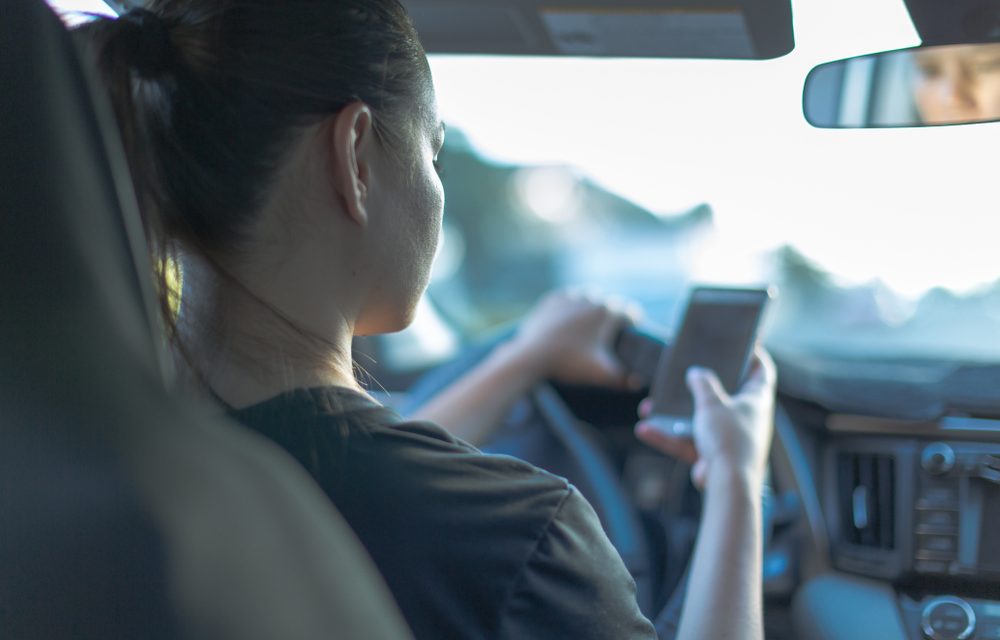Safe driving is more than just following rules; it’s about adopting habits that prioritize your safety and the safety of others on the road. In this guide, we’ll explore essential safe driving habits that every car owner should practice to prevent accidents, reduce traffic congestion, and promote a positive driving experience.
Regular Vehicle Maintenance:
1. Importance of Vehicle Maintenance:
Regular maintenance ensures your vehicle operates efficiently and reduces the risk of breakdowns on the road.
2. Checking Fluid Levels:
Keep an eye on essential fluids such as engine oil, coolant, brake fluid, and windshield washer fluid to ensure proper vehicle function.
3. Inspecting Tires:
Regularly inspect tire pressure, tread depth, and overall condition to maintain traction and prevent blowouts.
4. Checking Lights and Signals:
Ensure all lights and signals are working correctly to enhance visibility and communicate your intentions to other drivers.
Avoiding Distractions:
1. Types of Distractions:
Distractions can be visual, manual, or cognitive. Avoid activities like texting, eating, or adjusting the radio while driving.
2. Using Hands-Free Devices:
If you need to make calls or use navigation, opt for hands-free devices to minimize distractions and keep your focus on the road.
3. Limiting Passenger Conversations:
Engaging in deep or emotionally charged conversations with passengers can divert your attention from driving. Keep conversations light and brief.
4. Avoiding Texting and Driving:
Texting while driving is one of the most dangerous distractions. Always pull over to a safe location if you need to send or read a text message.
Following Traffic Laws:
1. Importance of Traffic Laws:
Traffic laws are in place to maintain order and safety on the road. Familiarize yourself with local laws and regulations.
2. Understanding Speed Limits:
Adhere to posted speed limits, adjusting your speed based on road conditions, visibility, and traffic flow.
3. Yielding and Right-of-Way:
Know when to yield to other vehicles, pedestrians, and cyclists to prevent collisions and maintain traffic flow.
4. Signaling Properly:
Always use turn signals and indicators to communicate your intentions to other drivers, reducing the risk of misunderstandings and accidents.
Maintaining Safe Following Distance:
1. Importance of Following Distance:
Maintaining a safe following distance gives you time to react to sudden stops or hazards ahead, reducing the risk of rear-end collisions.
2. Calculating Following Distance:
Use the “three-second rule” or the “two-second rule” to determine a safe distance between your vehicle and the one in front of you.
3. Adjusting for Weather Conditions:
Increase your following distance in adverse weather conditions such as rain, snow, or fog, where stopping distances are longer.
4. Avoiding Tailgating:
Tailgating increases the likelihood of rear-end collisions. Stay at least one car length behind the vehicle in front for every 10 mph of speed.
Using Proper Lane Discipline:
1. Importance of Lane Discipline:
Proper lane discipline promotes smooth traffic flow and reduces the risk of side-swipe collisions.
2. Following Lane Markings:
Observe lane markings and stay within yourdesignated lane. Avoid drifting between lanes without signaling.
3. Proper Lane Changes:
Use your mirrors and signal before changing lanes. Check blind spots and ensure there’s enough space before merging.
4. Avoiding Weaving in Traffic:
Stick to your lane and avoid unnecessary lane changes, especially in heavy traffic. Weaving between lanes can confuse other drivers and increase the risk of accidents.
Practicing Defensive Driving:
1. Understanding Defensive Driving:
Defensive driving involves anticipating potential hazards and taking proactive measures to avoid accidents.
2. Anticipating Other Drivers’ Actions:
Be aware of the actions of other drivers around you and anticipate sudden movements or lane changes.
3. Using Mirrors Effectively:
Regularly check your mirrors to monitor traffic behind and beside you. Use them before changing lanes or making turns.
4. Being Prepared for Emergencies:
Keep an eye on escape routes and have a plan in case of emergencies, such as swerving to avoid a collision.
Handling Adverse Weather Conditions:
1. Preparing for Adverse Weather:
Check weather forecasts before heading out and prepare your vehicle accordingly with appropriate tires and equipment.
2. Driving in Rain:
Reduce speed, increase following distance, and use windshield wipers and headlights in rainy conditions.
3. Driving in Snow and Ice:
Drive slowly, brake gently, and avoid sudden movements. Use snow tires or tire chains for added traction.
4. Handling Fog and Reduced Visibility:
Use low-beam headlights, fog lights, and windshield defrosters to improve visibility in foggy conditions. Slow down and use caution.
Avoiding Aggressive Driving:
1. Recognizing Aggressive Driving Behaviors:
Aggressive driving includes behaviors such as tailgating, excessive speeding, and weaving in and out of traffic.
2. Controlling Road Rage:
Stay calm and avoid engaging with aggressive drivers. Focus on your own safety and well-being.
3. Staying Calm in Traffic:
Traffic congestion can be frustrating, but maintaining a calm demeanor reduces stress and prevents aggressive behavior.
4. Reporting Aggressive Drivers:
If you encounter a dangerously aggressive driver, report them to local authorities or highway patrol to prevent potential accidents.
Taking Breaks During Long Trips:
1. Importance of Rest:
Fatigue impairs judgment and reaction times. Take regular breaks to rest and stretch during long drives.
2. Recognizing Driver Fatigue:
Watch for signs of fatigue such as yawning, heavy eyelids, or drifting out of your lane. Pull over and rest if needed.
3. Planning Rest Stops:
Plan your route with designated rest stops or service areas where you can take breaks, grab refreshments, and stretch your legs.
4. Rotating Drivers on Long Trips:
If possible, share driving duties with another licensed driver to prevent fatigue and stay alert throughout the journey.
Practicing Proper Parking Etiquette:
1. Parking Laws and Regulations:
Familiarize yourself with local parking laws and regulations to avoid fines and penalties.
2. Choosing Safe Parking Spots:
Park in well-lit areas with visible signage and avoid parking in secluded or dimly lit areas.
3. Parking Within Marked Spaces:
Park your vehicle within designated parking spaces to maximize space utilization and prevent congestion.
4. Avoiding Double Parking:
Double parking blocks traffic flow and inconveniences other drivers. Always park in a single designated space.
Respecting Pedestrians and Cyclists:
1. Importance of Pedestrian Safety:
Pedestrians have the right-of-way in crosswalks and intersections. Always yield to pedestrians and exercise caution in areas with heavy foot traffic.
2. Yielding to Pedestrians:
When approaching crosswalks or pedestrian crossings, slow down and allow pedestrians to cross safely.
3. Sharing the Road with Cyclists:
Maintain a safe distance when passing cyclists and watch for their hand signals. Give cyclists plenty of room and be patient.
4. Watching for Crosswalks and Bike Lanes:
Be alert for crosswalks, bike lanes, and shared paths. Respect the right-of-way of pedestrians and cyclists at all times.
Using Proper Signaling and Communication:
1. Importance of Signaling:
Signaling communicates your intentions to other road users, promoting predictability and reducing the risk of accidents.
2. Signaling Turns and Lane Changes:
Always use your turn signals well in advance of turning or changing lanes. Make sure your signals are clear and visible to others.
3. Communicating with Other Drivers:
Use eye contact, hand gestures, and horn signals to communicate with other drivers when necessary, but avoid aggressive or confrontational behavior.
4. Using Horns Appropriately:
Use your horn sparingly and only to alert other drivers of potential dangers or to prevent accidents. Avoid using it in anger or frustration.
Keeping Your Vehicle Secure:
1. Importance of Vehicle Security:
Vehicle theft and break-ins are common. Take steps to secure your vehicle and protect your belongings.
2. Locking Doors and Windows:
Always lock your car doors and roll up windows when leaving your vehicle unattended, even for short periods.
3. Using Anti-Theft Devices:
Install anti-theft devices such as car alarms, steering wheel locks, or GPS tracking systems to deter theft and increase recovery chances.
4. Parking in Well-Lit Areas:
Park your vehicle in well-lit areas with high foot traffic to deter potential thieves and vandals. Avoid dark, secluded areas.
Avoiding Impaired Driving:
1. Understanding Impaired Driving:
Impaired driving includes alcohol, drugs, prescription medications, and fatigue. Never drive under the influence of any substance that impairs your ability to operate a vehicle safely.
2. Effects of Alcohol and Drugs:
Alcohol and drugs impair judgment, coordination, and reaction times, increasing the risk of accidents and fatalities.
3. Designating a Sober Driver:
If you plan to drink alcohol, designate a sober driver or use alternative transportation such as taxis or ridesharing services.
4. Using Ride-Sharing Services:
If you’re unable to drive due to impairment or fatigue, use ride-sharing services like Uber or Lyft to get home safely.
Practicing Patience and Courtesy:
1. Importance of Patience:
Patience reduces stress and aggression on the road, creating a safer and more pleasant driving environment for everyone.
2. Yielding to Other Drivers:
When in doubt, yield to other drivers, pedestrians, and cyclists. It’s better to err on the side of caution and prevent accidents.
3. Respecting Traffic Flow:
Respect the flow of traffic and avoid sudden stops, starts, or lane changes that disrupt the natural rhythm of driving.
4. Showing Courtesy to Fellow Drivers:
Extend common courtesies such as allowing merging, giving way at intersections, and thanking other drivers with a wave or nod.
Remaining Calm During Traffic Jams:
1. Understanding Traffic Jams:
Traffic jams are inevitable, especially in urban areas or during peak travel times. Accept them as part of the driving experience and remain calm.
2. Staying Patient in Congested Areas:
Keep your cool and avoid aggressive or reckless behavior when stuck in traffic. Use the time to relax, listen to music, or catch up on podcasts.
3. Keeping a Safe Distance:
Maintain a safe following distance in stop-and-go traffic to prevent rear-end collisions. Leave ample space between your vehicle and the one in front.
4. Avoiding Aggressive Behavior:
Resist the urgeto engage in aggressive behavior such as honking excessively, cutting off other drivers, or weaving through lanes. Aggression only adds to the stress of the situation and increases the risk of accidents.
Keeping Your Focus on the Road:
1. Importance of Focus:
Distractions divert your attention from the road and increase the likelihood of accidents. Stay focused on driving at all times.
2. Avoiding Daydreaming:
Daydreaming while driving can lead to lapses in attention and delayed reaction times. Stay engaged with your surroundings and focus on the task at hand.
3. Staying Alert in Traffic:
Traffic conditions can change rapidly. Stay alert and scan the road ahead for potential hazards, adjusting your speed and position accordingly.
4. Eliminating In-Car Distractions:
Minimize in-car distractions by pre-setting your radio stations, programming your GPS before driving, and securing loose items to prevent them from rolling around.
Setting a Good Example for Others:
1. Leading by Example:
As a responsible driver, you set the tone for others on the road. Follow traffic laws, practice safe driving habits, and show courtesy to fellow motorists.
2. Teaching Safe Driving Habits to Others:
Share your knowledge and experience with new drivers, passengers, and family members. Educate them about the importance of safe driving practices.
3. Advocating for Safe Driving Practices:
Support initiatives and campaigns aimed at promoting safe driving behaviors in your community. Encourage others to join you in making roads safer for everyone.
4. Promoting Safe Driving Initiatives:
Participate in safe driving programs, volunteer for community events, and engage with local organizations that promote road safety awareness.
Conclusion:
Safe driving is a responsibility that every car owner should take seriously. By practicing the habits outlined in this guide, you can protect yourself, your passengers, and others on the road from unnecessary risks and dangers. Remember to stay vigilant, patient, and courteous behind the wheel, and always prioritize safety above all else. Together, we can create a safer driving environment for everyone. Safe travels!





